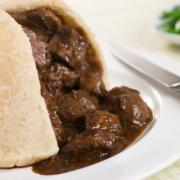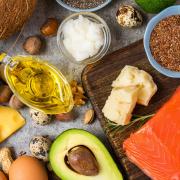The emergence of asparagus surely marks the beginning of summer – their pointy emerald green or purple spears forcefully bursting forth towards the warming late spring sun, writes Charlotte Smith-Jarvis

The emergence of asparagus surely marks the beginning of summer – their pointy emerald green or purple spears forcefully bursting forth towards the warming late spring sun.
Majestic, feted and marketed as luxurious, asparagus can claim a popularity enjoyed by no other vegetable. Honestly, no one really jumps for joy at the sight of the first of the season’s broccoli, or early stems of earthy-scented Brussels sprouts.
But there’s a palpable excitement surrounding asparagus – not least because it’s claimed to be one of nature’s greatest aphrodisiacs owing to its shape and to the potent cocktail of nutrients held within.
Famous herbalist Nicholas Culpepper was quoted as saying the spears “stir up lust in man and woman”.
And the French, not to be outdone where matters of the heart are concerned, spent much of the 19th century plying bridegrooms with pre-wedding suppers of asparagus.
You can’t beat local and in the UK we export little, if any, asparagus, greedily bunching the green goodies and keeping them all for ourselves.
Suffolk is particularly good at growing this crop and, surveying his 100 acres of asparagus by the east coast at William Kerr Farms, farm director Bruce Kerr cites the temperate climate and light sandy soil as the top reasons for our success.
“The land makes the perfect conditions for growing healthy, tasty asparagus. We don’t ‘force’ ours by growing under polythene – we let nature take its course and, unlike imported skinny asparagus, we think the larger the diameter, the better the bite and quality.”
There’s lots of talk about what to do with asparagus spears. Do you snap off the ends? Do you cut them? Is steaming better than griddling?
Bruce reveals how he eats his: “I like my asparagus gently steamed and served with a bite. There’s no need to add anything.”
According to Bruce, the following timings are about right to get the best out of one of Suffolk’s most beautiful ingredients.
To boil, place the stems in a small amount of boiling water for around five to six minutes. Steam for six to eight minutes. Or stir fry for three to five minutes, cutting the spears into half inch pieces and leaving the tips whole.
Bruce says that asparagus is best eaten fresh, but can be frozen. To keep yours pert, trim the stems after buying and wrap in moist kitchen roll, standing upright in two inches of fresh cold water in the fridge. Consume in two to three days.
Incidentally, celery will stay firm if placed upright in water too.




























